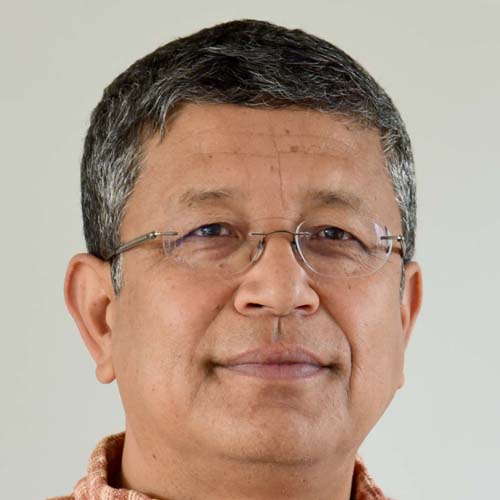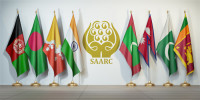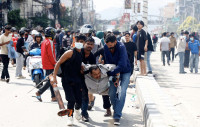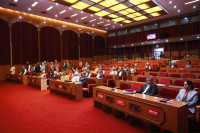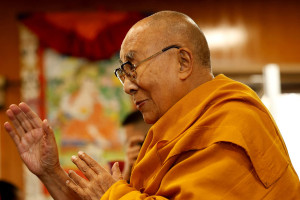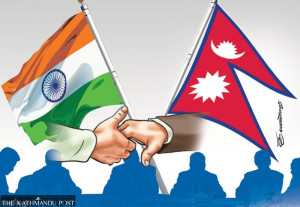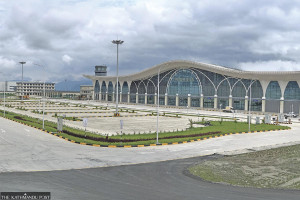Columns
Representation and the media
The average family represented in ads looks and sounds no different from the archetype Nepalis in pre-1990 films.
Deepak Thapa
A little storm erupted recently in the United Kingdom when a sitting member of parliament declared during a TV phone-in that “it drives me mad when I see adverts full of black people, full of Asian people”. She complained that non-whites do not reflect British society and rued that the “average white person, average white family” does not feature any more on TV. Following the expected furore, the MP, Sarah Pochin of the anti-immigrant Reform UK party, has since said that her comment was “phrased poorly” even as she insisted that the TV ads were indeed “unrepresentative of British society”.
With her party riding high on the ever-rising populist backlash against newcomers common to practically all of the West, it is no surprise that the MP should lash out thus. In fact, there is likely to be more direct opposition to any expressions of immigration-driven multiculturalism. For those who believe that their “way of life” is under threat, there could not be a more powerful imagery than the television commercials referred to by Pochin.
Which brings us to the question: What of a ‘pre-existing’ multicultural society like Nepal’s? How have literature, arts and popular media portrayed Nepal’s non-dominant population groups over the decades, how often do they feature, and how strong is their own participation? I am not aware of any study dealing with this issue comprehensively. Hence, here come my two bits.
Of Nepalis and Nepalis
Nepal was a different world before the 1990 political change. The private media was limited to black-and-white tabloids, and the national TV had gone on air just a few years earlier. Films were the main source of entertainment, with the fare limited mainly to Hindi movies. We were treated to only one Nepali film or so every year until 1990.
A persistent feature in all these films (and that appears to be true to some extent even now) is that the main protagonists were always some amorphous ‘Nepali’ type, in keeping with the Panchayat ideology of the time. It was never clarified what their caste or ethnicity was, although with references to ‘kaji’ thrown in now and again, one would have to surmise that they were meant to be Chhetris. Even in a progressive film like Kumari (1977), the first Nepali colour feature, which by definition deals with Newar traditions, there was no hint of Newar-ness at all. (The privately produced Silu [1987] did break new ground by being the first non-Nepali language film, but that was an exception.)
Things have shifted a great deal since, with films dealing with cultures of different social groups now commonly screened and received quite enthusiastically by all kinds of audiences as well. Silu was the first, but perhaps because of the language factor, it did not have the same kind of crossover appeal that later films did. Among the first of the latter was Numafung (2001), a heterolingual film in Nepali and Limbu, which was acclaimed in the film festival circuit and did well both in Nepal and among the diaspora. It was billed as one depicting Limbu culture, and that is certainly true. But for some reason, I have always wondered why the filmmakers decided to limit it thus. For it certainly begs the question, if Numafung showed Limbu culture, which film depicts ‘Nepali culture’? Can only the portrayals in the Panchayat-era films mentioned above be termed so?
The Nepali look
Which takes us to the next question: What does a Nepali look like? Take, for example, all the advertisements one sees in the print or electronic media. The average household or family represented in these ads look and sounds no different from the ‘archetype’ Nepalis in the pre-1990 films. Not once have I seen a Madheshi-looking individual or family except as the stereotype sometimes of a paan-seller, etc. It is the same with Janajatis. Apart from celebrities such as Madan Krishna Shrestha, Bijaya Lama and Mahabir Pun, I have seen not one advertisement with a Janajati individual as, say, a banker or an ordinary middle-class Janajati family sitting down to dinner. The only time the different groups that comprise the Nepali mosaic are foregrounded is when it is time for Nepal’s diversity to be exoticised.
Having been an observer of such matters over the years, I have noticed something. When a Nepali ad (or one meant to be aired in Nepal) is made by an Indian company, there is a greater level of diversity in physical features. In fact, I get a sense that there are more Janajati-looking characters in the few India-produced ads (although Madheshis are still left out). And this has to do with the perception quite common in India that Nepalis have a certain look.
I used to know this chap from years long gone by who was a student in Delhi in the late 1970s. He used to regale us with stories about how ‘We Chinkies’ (meaning, Nepalis and those from India’s northeast) would band together in Delhi to take on what he called ‘the Indians’. This man was an upper middle-class Bahun from Kathmandu, the very fair type who might have been prevented from entering Pashupatinath for being a ‘kuire’. And yet, because he was a Nepali, he not only identified as a ‘chinky’ but was also considered one. It is for the same reason I have come across ‘hate videos’ on social media with Indians deriding Nepalis for eating with chopsticks and so on, and also why people from the Northeast are harassed as Nepalis in the mainland. There is no educating the average Indian that ‘chinkies’ constitute only a third of the Nepali population.
Thus, we move from one extreme of complete invisibility in the case of Janajatis and Madhesis to greater visibility for Janajatis but still invisibility of Madhesis, depending on where the commercial is made.
Meaningful representation
In her tirade, MP Pochin had referred to a publication from Channel 4, the much-loved UK public television channel. The report showed that TV ads with black people jumped from 37 percent to 51 percent following the Black Lives Matter movement. South and East Asians also featured far in excess of their respective population strengths. Unfortunately, the increased presence was not always meaningful. As the report noted: “[N]ot all representation feels inclusive…Too often, minority groups are shown in stereotypical settings, or included without meaningful dialogue, which limits impact. Short screen time further weakens efforts to normalise inclusion, leaving representation feeling surface-level…Brands should ask: are we dismantling stereotypes, normalising diversity, and giving characters enough space to feel real and valued? Only then does representation achieve genuine inclusion.”
That is the kind of debate we should also be having within the media. More importantly, similar discussions should be carried with players in industry and commerce. They are the ones who can truly make that shift possible.




 14.12°C Kathmandu
14.12°C Kathmandu